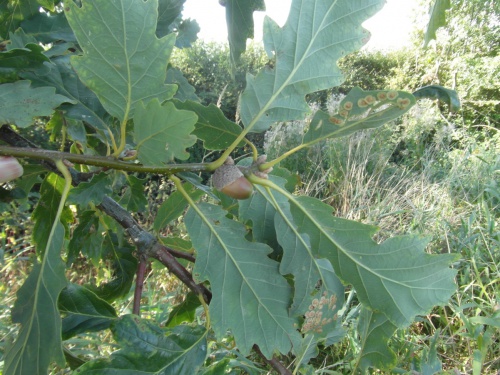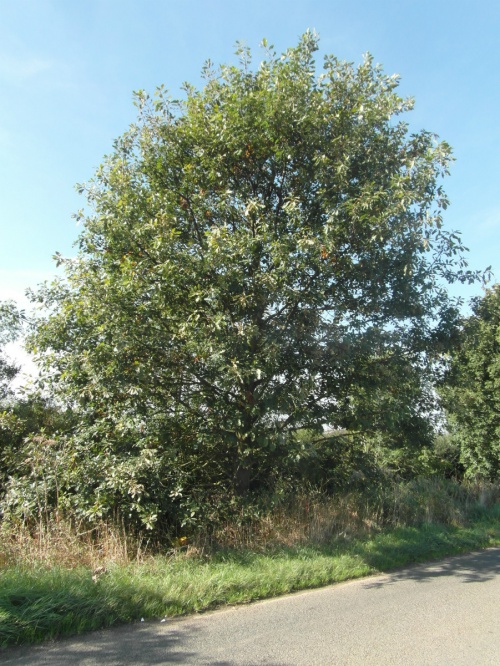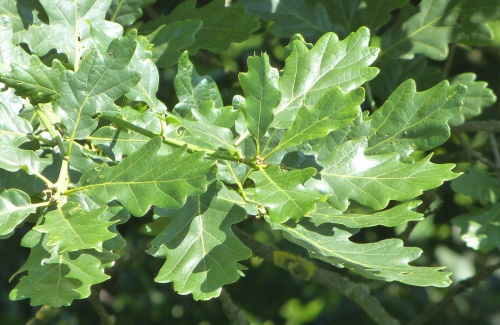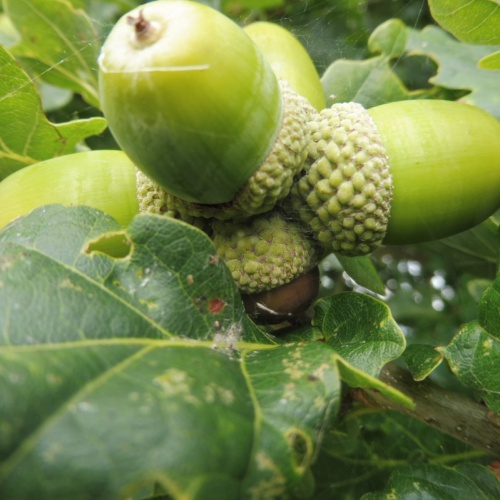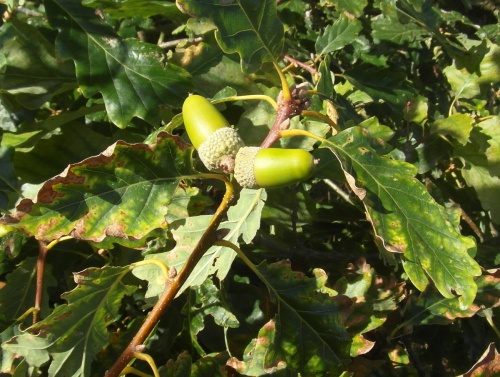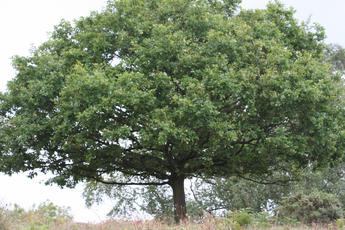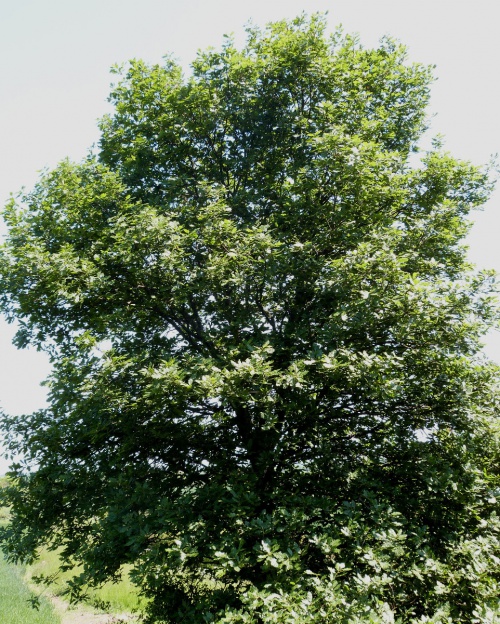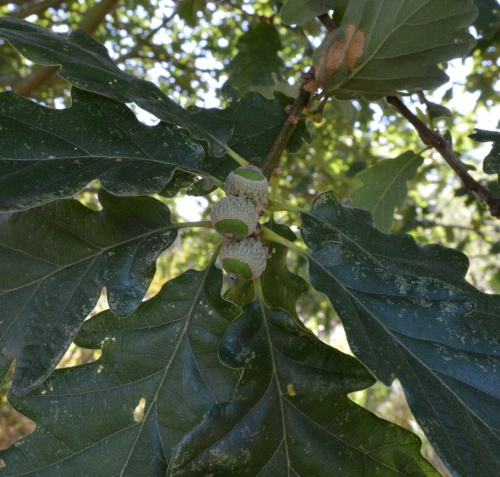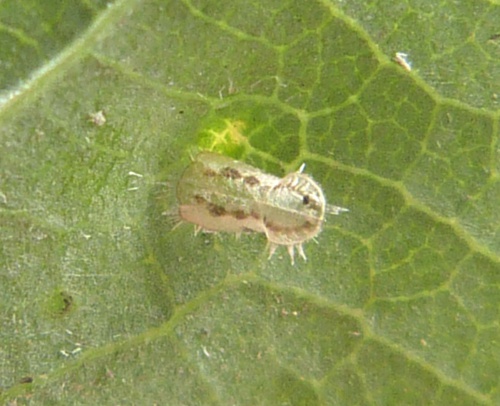Sessile Oak - Quercus petraea
The Sessile Oak is a large deciduous tree up to 20-40 m tall, and similar to the Pedunculate Oak, with which it overlaps extensively in range. The leaves are 7-14 cm long and 4-8 cm broad, evenly lobed with five to six lobes on each side, and a 1 cm petiole. The flowers are catkins, produced in the spring. The fruit is an acorn which is stalkless 2-3 cm long and 1-2 cm broad.
The Sessile Oak is a smaller tree than Pedunculate Oak the stalked leaves and stalkless acorns are good identification characters, as is the absence of distinct lobes at the junction of the lamina and petiole; the presence of stellate leaf hairs confirm an id. The number of lobes on a leaf is too variable to be of any use as an id character.
The two species hybridise - Quercus x rosacea
Found in a variety of habitats, and is often seen in upland areas of high rainfall, but will also tolerate dry soils.
Flowers with young leaves in April & May.
Deciduous
Fairly common and widespread in Britain.
Occasional in Leicestershire and Rutland. In the 1979 Flora survey of Leicestershire it was found in 17 of the 617 tetrads.
Leicestershire & Rutland Map
Enter a town or village to see local records
MAP KEY:
Yellow squares = NBN records (all known data)
Coloured circles = NatureSpot records: 2020+ | 2015-2019 | pre-2015
UK Map
Species profile
- Common names
- Sessile Oak, Durmast Oak
- Species group:
- Trees, Shrubs & Climbers
- Kingdom:
- Plantae
- Order:
- Fagales
- Family:
- Fagaceae
- Records on NatureSpot:
- 22
- First record:
- 21/09/2005 (Brice Ebert;Emma Williams)
- Last record:
- 25/08/2023 (Charity, Kenneth)
Total records by month
% of records within its species group
10km squares with records
The latest images and records displayed below include those awaiting verification checks so we cannot guarantee that every identification is correct. Once accepted, the record displays a green tick.
In the Latest Records section, click on the header to sort A-Z, and again to sort Z-A. Use the header boxes to filter the list.
Latest images
Latest records
Trioza remota
The larvae of Trioza remota cause galls to form on the leaves of English Oak and Sessile Oak. These take the form of a raised pimple on the upper surface of the leaf about 1 to 2 mm across, often several to a leaf. On the underside of the leaf there is a corresponding shallow depression which contains a flat, pale orange-yellow nymph.


